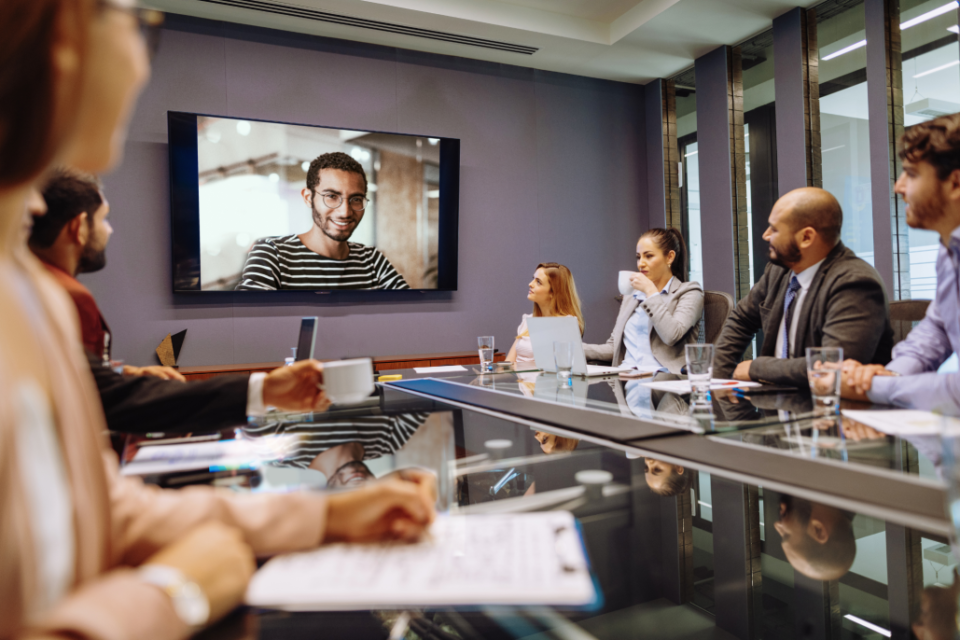Explore the feture and benifits
Conference Room Solution
We provide Audio-Visual (AV) system, meeting room booking system and interactive display for a conference room involves integrating technology that enhances communication, collaboration, and presentation capabilities. Here’s a list of components and considerations for setting up an effective AV system in your conference room:

- Display Screens:
- Choose large, high-resolution displays or projectors that suit the size of the conference room. Consider factors like ambient lighting and viewing angles when selecting the display technology.
- Video Conferencing Equipment:
- Integrate a high-quality video conferencing system with a camera, microphone, and speakers. Ensure compatibility with popular conferencing platforms like Zoom, Microsoft Teams, or Cisco Webex.
- Audio System:
- Install a reliable audio system with microphones strategically placed to capture clear audio from all participants. Consider using ceiling microphones or tabletop microphones based on the room layout.
- Control System:
- Implement a user-friendly control system to manage all AV components seamlessly. This can be a dedicated touch panel, a tablet, or a smartphone with a custom interface for controlling displays, audio, and video conferencing.
- Wireless Presentation System:
- Incorporate a wireless presentation system that allows participants to share content from their laptops or mobile devices without the need for physical cables. This enhances collaboration and reduces setup time.
- Collaboration Tools:
- Integrate collaboration tools such as digital whiteboards or interactive displays to enhance brainstorming sessions and collaborative work. These tools can enable annotation, screen sharing, and real-time editing.
- Room Booking System:
- Implement a room booking system integrated with the AV setup to streamline scheduling and ensure that the conference room is available when needed.
- Room Acoustics:
- Consider acoustic treatments to minimize echo and background noise, providing a better audio experience during video conferences.
- Power and Connectivity:
- Ensure there are ample power outlets and connectivity options (HDMI, USB, etc.) at the conference table for various devices participants may use.
- Backup Connectivity:
- Include backup options for internet connectivity, such as a secondary network connection or mobile hotspot, to ensure uninterrupted video conferencing.
- Cable Management:
- Implement a cable management system to keep cables organized and prevent tripping hazards. This contributes to a clean and professional look for the conference room.
- Security:
- Secure the AV system by implementing access controls and ensuring that the software and firmware are regularly updated to address security vulnerabilities.
- Training and Support:
- Provide training for users on how to operate the AV system effectively. Establish a support system for troubleshooting and addressing any technical issues that may arise during meetings.
- Remote Management:
- Consider AV systems with remote management capabilities, allowing IT staff to monitor and troubleshoot issues without physically being in the conference room.
- Accessibility:
- Ensure that the AV system is accessible to users with disabilities, including features such as closed captioning and compatibility with assistive technologies.
When designing an AV system for a conference room, it’s important to tailor the setup to the specific needs and requirements of the organization. Regular maintenance and updates will help ensure the continued functionality and reliability of the AV system.
